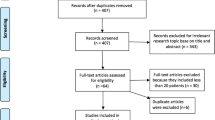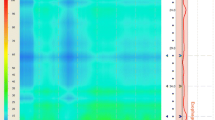Abstract
New trends have emerged regarding the best minimally invasive access approaches to perform gastrointestinal surgery. However, these newer approaches are seen critically by those who demand a more strict assessment of outcomes and safety. An international panel of expert gathered at the 2014 American College of Surgeons Meeting with the goal of providing an evidence-based understanding of the real value of these approaches in gastrointestinal surgery. The panel has compared the efficacy and safety of most established approaches to gastrointestinal diseases to those of new treatment modalities: peroral esophageal myotomy vs. laparoscopic myotomy for achalasia, transgastric vs. transvaginal approach, and single-incision vs. multi-port access minimally invasive surgery. The panel found that (1) the outcome of these new approaches was not superior to that of established surgical procedures; (2) the new approaches are generally performed in few highly specialized centers; and (3) transgastric and transvaginal approaches might be safe and feasible in very experienced hands, but cost, training, operative time, and tools seem to limit their application for the treatment of common procedures such as cholecystectomy and appendectomy. Because the expected advantages of new approaches have yet to be proven in controlled trials, new approaches should be considered for adoption into practice only after thorough analyses of their efficacy and effectiveness and appropriate training.
Similar content being viewed by others
References
Pellegrini C, Wetter LA, Patti M, et al. Thoracoscopic esophagomyotomy. Initial experience with a new approach for the treatment of achalasia. Ann Surg 1992;Sept:216(3):291-6.
Patti MG, Pellegrini CA, Horgan S, et al. Minimally invasive surgery for achalasia: An 8-year experience with 168 patients. Ann Surg 1999;230:587-94
Oelschlager BK, Chang L, Pellegrini CA. Improved outcome after extended gastric myotomy for achalasia. Arch Surg 2003;138:494-7
Richards WO, Torquati A, Holzman MD, et al. Heller myotomy versus Heller myotomy with Dor fundoplication for achalasia. A prospective randomized double-blind clinical trial. Ann Surg 2004;240:405-15
Rawlings A, Soper NJ, Oelschlager B, et al. Laparoscopic Dor versus Toupet fundoplication following Heller myotomy for achalasia: results of a multicenter, prospective, randomized-controlled trial. Surg Endosc 2012;26:18-26
Rebecchi F, Giaccone C, Farinella E, et al. Randomized controlled trial of laparoscopic Heller myotomy plus Dor fundoplication versus Nissen fundoplication for achalasia. Ann Surg 2008;248:1023-30
Patti MG, Herbella FA. Fundoplication after laparoscopic Heller myotomy for esophageal achalasia: What type? J Gastrointest Surg 2010;14:1453-8
Zaninotto G, Costantini M, Rizzetto C, et al. Four hundred laparoscopic myotomies for esophageal achalasia. A single center experience. Ann Surg 2008;248:986-93
Cowgill SM, Villadolid D, Boyle R, et al. Laparoscopic Heller myotomy for achalasia: results after 10 years. Surg Endosc 2009;23:2644-9
Inoue H, Minami H, Kobayashi Y, et al. Peroral endoscopic myotomy (POEM) for esophageal achalasia. Endoscopy 2010;42:265-71
Swanstrom LL, Kurian A, Dunst CM, et al. Long-term outcomes of an endoscopic myotomy for achalasia. The POEM procedure. Ann Surg 2012;256:659-67
Von Renteln D, Fuchs KH, Fockens P, et al. Peroral endoscopic myotomy for the treatment of achalasia: An international prospective multicenter study. Gastroenterology 2013;145:309-11
Hungness ES, Teitelbaum EN, Santos BF, et al. Comparison of perioperative outcomes between peroral esophageal myotomy (POEM) and laparoscopic Heller myotomy. J Gastrointest Surg 2013;17:228-35
Bhayani NJ, Kurian AA, Dunst CM, et al. A comparative study on comprehensive, objective outcomes of laparoscopic Heller myotomy with per-oral endoscopic myotomy (POEM) for achalasia. Ann Surg 2014;259:1098-103
Eckardt VF, Gockel I, Bernhard G. Pneumatic dilation for achalasia: late results of a prospective follow up investigation. Gut 2004;53:629-33
Pasricha PJ, Hawari R, Ahmed I, et al. Submucosal endoscopic esophageal myotomy: a novel experimental approach for the treatment of achalasia. Endoscopy 2007;39:761-4
Inoue H, Ikeda H, Hosoya T, et al. Submucosal endoscopic tumor resection for subepithelial tumors in the esophagus and cardia. Endoscopy 2012;44:225-30
Shiwaku H, Inoue H, Beppu R, et al. Successful treatment of diffuse esophageal spasm by peroral endoscopic myotomy. Gastrointest Endosc. 2013;77:149-50
Khashab MA, Stein E, Clarke JO, et al. Gastric peroral endoscopic myotomy for refractory gastroparesis: first human endoscopic pyloromyotomy (with video). Gastrointest Endosc. 2013;78:764-8
Kurian AA, Dunst CM, Sharata A, et al. Peroral endoscopic esophageal myotomy: defining the learning curve. Gastrointest Endosc. 2013;77:719-25
Teitelbaum EN, Soper NJ, Arafat FO, et al. Analysis of a learning curve and predictors of intraoperative difficulty for peroral esophageal myotomy. J Gastrointest Surg 2014;18:92-8
Rattner D and Kalloo A, ASGE/SAGES working group. ASGE/SAGES working group on natural orifice translumenal endoscopic surgery. Surg Endosc 2006;20:329-33
Auyang ED, Santos BF, Enter D, et al. Natural Orifice Translumenal Endoscopic Surgery (NOTES™): A Technical Review. Surg Endosc. 2011;25:10:3135-48
Arezzo A, Zornig C, Mofid H, et al. The EURO-NOTES clinical registry for natural orifice transluminal endoscopic surgery: a 2-year activity report. Surg Endosc 2013;27:3073-84
Lehmann KS, Zornig C, Artl G, et al. Natural orifice transluminal endoscopic surgery in Germany: Data from the German NOTES registry. Chirurg in press 2014.
Memark VC, Anderson JB, Nau PN, et al. Transgastric endoscopic peritoneoscopy does not lead to increased risk of infectious complications. Surg Endosc 2011;25:2186-91
Kaehler G, Schoenberg MB, Kienle P, et al. Transgastric appendectomy. Br J Surg. 2013;100(7):911-5
Auyang ED, Hungness ES, Vaziri K, et al. Human Notes Cholecystectomy: Transgastric Hybrid Technique. J Gastrointest Surg, 2009;13(6):1149-50
Von Ott D. Die Beleuchtung der Bauchhohle (Ventroskopie) als Methodebei Vaginaler Coeliotomie. Abl Gynakol 1902;231:817-23
Paldi E, Timor-Tritsch I, Abramovici H, Peretz BA. Operative culdoscopy. Br J Obstet Gynaecol 1975;82:318-320
Decker A, Cherry TH. Culdoscopy—A new method in the diagnosis of pelvic disease—preliminary report. Am J Surg 1944; 64:40-44
Zornig C, Emmermann A, von Waldenfels HA, Felixmuller C. [Colpotomy for specimen removal in laparoscopic surgery]. Chirurg 1994;65:883-5
Zorron R, Palanivelu C, GalvaoNeto MP, et al. International Multicenter Trial on clinical natural orifice surgery—NOTES IMTN study: preliminary results of 362 patients. Surg Innov 2010;17:142-58
Gordts S, Watrelot A, Campo R, Brosens I. Risk and outcome of bowel injury during transvaginal pelvic endoscopy. Fertil Steril 2001;76:1238-41
Brummer TH, Jalkanen J, Fraser J, et al. FINHYST, a prospective study of 5279 hysterectomies: complications and their risk factors. Hum Reprod 2011;26:1741-51
Palanivelu C, Rajan PS, Rangarajan M, et al. NOTES: Transvaginal endoscopic cholecystectomy in humans-preliminary report of a case series. Am J Gastro 2009;104:843-7
Wood SG, Solomon D, Panait L, Bell RL, et al. Transvaginal Cholecystectomy: Effect on Quality of Life and Female Sexual Function. JAMA Surg. 2013;148(5):435-8
El-Toukhy TA, Hefni M, Davies A, Mahadevan S. The effect of different types of hysterectomy on urinary and sexual functions: a prospective study. J Obstet Gynaecol 2004;24:420-5
Roussis NP, Waltrous L, Kerr A, et al. Sexual response in the patient after hysterectomy: total abdominal versus supracervical versus vaginal procedure. Am J ObstetGynaecol 2004;190:1427-28
Soper NJ, Stockman PT, Dunnegan DL, et al. Laparoscopic cholecystectomy: the new “gold standard”? Arch Surg 1992;127:917-21
Anonymous. Prospective analysis of 1,518 laparoscopic cholecystectomies: The Southern Surgeons Club. NEJM 1991;324:1073-8
Anonymous. NIH Consensus Development Panel on Gallstones and Laparoscopic Cholecystectomy. JAMA 1993;269:1018-9
Barkun JS, Barkun AN, Sanpalis JS, et al. Randomized control trial of laparoscopic vs. mini cholecystectomy: the McGill gallstone treatment group. Lancet 1992;340:1116-9
The Clinical Outcomes of Surgical Therapy Study Group. A comparison of laparoscopically assisted and open colectomy for colon cancer. NEJM 2004;350:2050-9
Vinuela EF, Gonen M, Brennan MF, Strong VE. Laparoscopic vs. open distal gastrectomy for gastric cancer: a meta-analysis of randomized trials and high-quality nonrandomized studies. Ann Surg 2012;255:446-56
Cheah WK, Lenzi JE, So JBY, et al. Randomized trial of needle-scopic vs. laparoscopic cholecystectomy. Br J Surg 2001;88:45-7
Chen WTL, Chang SC, Chiang HC, et al. Single-incision laparoscopic vs. conventional laparoscopic right hemicolectomy: a comparison of short-term surgical results. Surg Endosc 2011;25:1887-92
Trastulli S, Cirocchi R, Desiderio J, et al. Systematic review and meta-analysis of randomized clinical trials comparing single-incision vs. conventional laparoscopic cholecystectomy. Br J Surg 2013;100:191-208
St Peter J, Adibe OO, Juang D, et al. Single incision vs. standard three port laparoscopic appendectomy: a prospective randomized trial. Ann Surg 2011;254:586-90
Marks JM, Phillips MS, Tacchino R, et al. Single incision laparoscopic cholecystectomy is associated with improved cosmesis scoring at the cost of significantly higher hernia rates: one year results of a prospective randomized multi-center single blinded trial of traditional multi-port laparoscopic cholecystectomy vs. single incision laparoscopic cholecystectomy. J Am Coll Surg 2013; 216:1037-47
Gill I, Advincula A, Aron M, et al. Consensus statement of the consortium for laparoendoscopic single site surgery. Surg Endosc. 2010;24:762-8
Hernandez J, Ross S, Morton C, et al. The learning curve of laparoendoscopic single site (LESS) cholecystectomy: definable, short, safe. J Am Coll of Surg. 2010;211:652-7
Ross S, Rosemurgy A, Albrink M, et al. Consensus statement of the consortium for LESS cholecystectomy. Surg Endosc. 2012;26:2711-6
Hernandez JM, Morton CA, Ross SB, et al. Laparoendoscopic single site cholecystectomy: the first 100 patients. Am Surg. 2009; 5:681-85
Ross SB, Managar D, Karlnoski R, et al. Laparo-endoscopic single site (LESS) cholecystectomy with epidural vs. general anesthesia. Surg Endosc. 2013; 27:1810-9
Ross SB, Choung E, Teta AF, et al. The learning curve of laparoendoscopic single-Site (LESS) fundoplication: definable, short, and safe. JSLS 2013;17:376-84
Ross S, Roddenbery A, Luberice K, et al. Laparoendoscopic single site (LESS) conventional laparoscopic fundoplication for GERD: is there a difference? Surg Endosc. 2013;27:538-47
Barry L, Ross S, Dahal S, et al. Laparoendoscopic single-site Heller myotomy with anterior fundoplication for achalasia. Surg Endosc. 2011;25:1766-74
Ross SB, Luberice K, Kurian TJ, et al. Defining the learning curve of laparoendoscopic single-site Heller myotomy. Am Surg. 2013;79:837-44
Boni L, Dionigi G, Cassinotti E, et al. Single incision laparoscopic right colectomy. Surg Endosc. 2010; 24:3233-6.
Poon JT, Cheung CW, Fan JK, et al. Single-incision versus conventional laparoscopic colectomy for colonic neoplasm: randomized controlled trial. Surg Endosc. 2012;26:2729-34
Author information
Authors and Affiliations
Corresponding author
Additional information
This paper is sponsored by the Division of Education, Committee on Emergent Surgical Technologies (CESTE), American College of Surgeons.
Rights and permissions
About this article
Cite this article
Fisichella, P.M., DeMeester, S.R., Hungness, E. et al. Emerging Techniques in Minimally Invasive Surgery. Pros and Cons. J Gastrointest Surg 19, 1355–1362 (2015). https://doi.org/10.1007/s11605-015-2766-7
Received:
Accepted:
Published:
Issue Date:
DOI: https://doi.org/10.1007/s11605-015-2766-7




